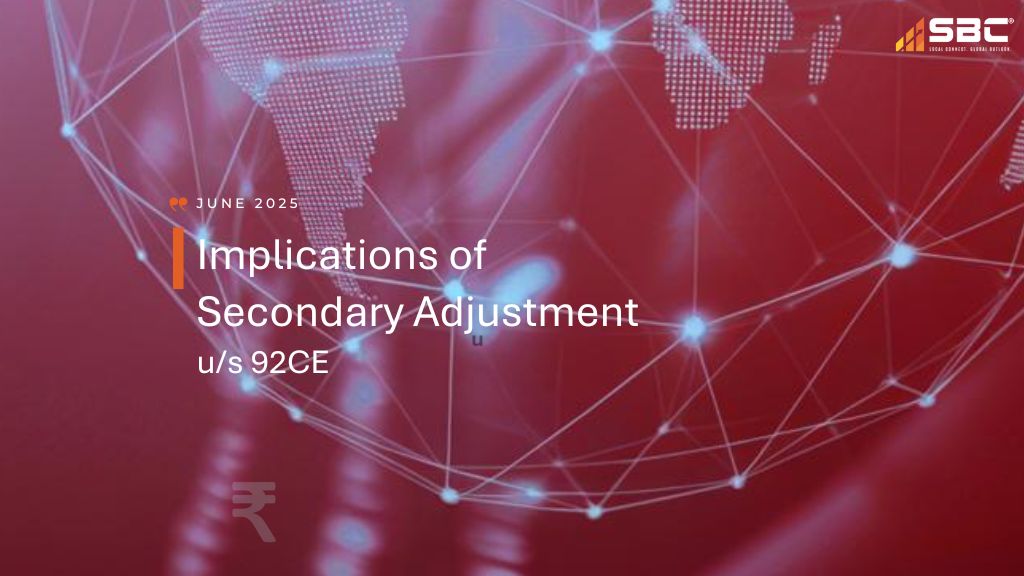LEARN EVERYTHING ABOUT TAX SYSTEM & TAXATION IN INDIA

September 26, 2022
Every government’s important and greatest source of revenue comes from taxes. Tax revenue is used by the government for a number of initiatives aimed at advancing the country. In India, the central government, state governments, and local municipal entities make up the tax structure. The three-tier structure of the Indian tax system is well-designed.
Major Central Taxes
- Income Tax
- Central Goods & Services Tax (CGST)
- Customs Duty
- Integrated Goods & Services Tax (IGST)
Major State Taxes
- State Goods & Services Tax (SGST)
- Stamp Duty & Registration
Local Municipal Taxes
- Property Tax
- Professional tax
Types of Taxes in India
The two main types of taxes in India are those levied by the Central and State governments:
1. Direct Taxes
2. Indirect Taxes
In India, you pay direct taxes on your income, but spending is subject to indirect taxes. The earning party, whether an individual, HUF, or business, is accountable for depositing the direct tax due.
Indirect taxes include value-added tax, service tax, goods and service tax, customs duty, etc. whereas direct taxes include income tax, gift tax, capital gain tax etc.
Direct taxes account for almost 50% of the government’s revenue in India. The majority of indirect taxes are collected by corporations and companies that provide goods and services. These organisations are therefore accountable for depositing indirect taxes.
Goods and Services Tax (GST)
A complicated network of indirect taxes has been consolidated into the Goods and Services Tax, or GST tax. India’s tax system consists of three tiers of levies: the central government, the states, and local governments.
Prior to the implementation of the GST, the following indirect taxes might be applied to goods and services in India:
a) Excise Duty
b) Entertainment Tax
c) Value Added Tax (VAT, State)
d) Octroi
e) Service Tax
f) Central Sales Tax (collected by State)
g) Purchase Tax
h) Entry Tax (State)
i) Luxury Tax (State)
These interconnected and sometimes overlapping taxes resulted in several drawbacks and disputes for manufacturers and suppliers as well as the governing authorities. Therefore, GST was brought into effect.
Taxability in India
Individual
An individual in India is taxed on the basis of the salary they earn

Company
The effective corporate tax rate for any corporate house would have the following components:
- Corporate tax
- Surcharge (charged for corporates earning higher incomes) and
- Education Cess (applied on corporate tax and surcharge above)
Corporate tax rates For Domestic corporates
- For a gross turnover of up to INR 400 crores in FY 2020-21, the corporate tax rate is 25%.
- For a gross turnover above INR 400 crores in FY 20, the corporate tax rate is 30%.
The domestic corporate houses are also provided with an option to opt for a beneficial tax rate of 15% (if engaged in manufacturing) and 22% (subject to foregoing certain benefits). These rates require the satisfaction of an enumerated list of conditions as given under Indian Income-tax laws.
For Foreign corporates
- Interest is charged at 5% or 20%
- Royalty or Fee for technical services is charged at a 10% tax rate.
- Any other kind of income is charged at a rate of 40%
The above rates are subject to rates given in Tax-treaty with the country in which the foreign corporate is domiciled.

- Surcharge:–
- Health and Education Cess: @4% of income tax plus surcharge
- MAT: All businesses, whether domestic or foreign (apart from those in the infrastructure and power sectors), that report zero or a minimal income in order to avoid paying taxes are required to pay MAT at a rate of 15 percent (plus surcharge and cess as applicable)
Branch Office
- Project Offices and Branch Offices are both considered as Indian Permanent Establishments of their foreign headquarters. As a result, it is taxed at a rate of 40%* on its Indian profits.
- A PAN, TAN, yearly income tax return and AAC must all be obtained by the PO/BO.
- There are no additional taxes due upon repatriation of excess or at the time of closure for POs or BOs.
Firm/LLP
- An LLP formed in India is regarded as an Indian tax resident and is subject to a 30 percent* tax on its worldwide revenue.
- A PAN and TAN must be obtained, and an annual income tax return must be filed.
Taxation Of Different Foreign Entities As Per Income Tax Act
A company formed in India (Wholly-owned subsidiary/ Joint Venture)
- An Indian-incorporated business is considered an Indian tax resident and is subject to a 30 percent tax on its worldwide revenue. However, the appropriate rate of tax is 25 percent if its turnover in FY 2017–18 is up to INR 4,000 mn.
- A PAN and TAN must be obtained, and an annual income tax return must be filed.
- The domestic firm is exempt from paying dividend distribution tax starting with the Assessment Year 2021–2022 on any amount declared, distributed, or paid by such a company as a dividend.
- A domestic company’s dividend is taxable in the hands of the shareholders.
LLPs
The profits that LLP distributes to its partners are not subject to tax in either party’s possession. Repatriation of capital contributions is permitted without any thresholds and is not subject to any additional taxes, such as upon dissolution.
Liaison Office
- Due to Indian exchange control restrictions, a Liaison Office (LO) is often exempt from income tax in India because it cannot engage in commercial activity or generate profits.
- Both a withholding tax registration number (TAN) and an Indian tax registration number (PAN) must be obtained.
- A yearly financial affairs statement and an annual activity certificate must be submitted (AAC) by LO.
- There are no repatriation taxes due to the fact that a LO often cannot produce any profits. Even if there are any unutilized funds at the time of its closure, it can be repatriated without any exit taxes.
The whole income tax collection and return filing procedure has been digitalized by India’s income tax department over the last several years. Through the numerous portals of the Income Tax Department, it has become quite simple for both individuals and companies to pay their taxes online, file returns, and finally trace the history of their payments.
How Steadfast Business Consulting Helps You With Taxation
Steadfast Business Consulting’s income tax services keep you informed of the evolving needs of the taxation system in India and overseas while minimizing your exposure to business and personal taxation. We provide a wide range of completely integrated direct tax and regulatory services for thriving firms in both their local and international activities. For major multinational corporations, mid-sized firms, high-net-worth individuals, and company owners wishing to expand, our specialised teams offer the most tax-effective options.
Frequently Asked Questions
Who are the taxpayers in India?
A taxpayer, also known as an assessor, is a person who must pay tax to the government on the basis of the type and amount of income received during an assessment year. In India, a taxpayer is anyone who is earning an income, whether an individual or a corporate.
What are the different types of taxes in India?
In India, there are two different forms of taxes: direct tax and indirect tax. Indirect taxes include value-added tax, service tax, Good and Service Tax, customs duty, etc. whereas direct taxes include income tax, gift tax, capital gain tax, etc.
What is the structure of the Indian tax system?
The Indian tax system is well structured and has three tiers. The central government, state governments, and local municipal entities make up the tax structure.
CONTACT US
RELATED POSTS
-
 24 Sep 2025Transfer Pricing (TP) Compliance Developments in Mauritius - Finance Act 2025
24 Sep 2025Transfer Pricing (TP) Compliance Developments in Mauritius - Finance Act 2025 -
 24 Sep 2025360° Fixed Asset Management
24 Sep 2025360° Fixed Asset Management -
 20 Jun 2025Implications of Secondary Adjustment u/s 92CE
20 Jun 2025Implications of Secondary Adjustment u/s 92CE -
 16 Jun 2025Transfer Pricing Assessment Procedure
16 Jun 2025Transfer Pricing Assessment Procedure -
 31 May 2025ITAT Delhi Ruling on Treaty Abuse Allegation and DTAA Benefits
31 May 2025ITAT Delhi Ruling on Treaty Abuse Allegation and DTAA Benefits
RELATED POSTS
- An Overview: Corporate Taxation In India
- Why Hire SBC For GST Services?
- How Tax Consulting Services Are Helpful To Your Business?
- Why Are Mergers & Acquisitions Service Crucial For Enterprises
- Transfer Pricing Services And Consultancy: Top Reasons Why You Should Choose SBC
- Why Your Business Should Get A Corporate Valuation?
- Take Charge Of Your Taxes In Legal, & Ethical Ways With Steadfast Tax Planning Services
Categories

Company
The effective corporate tax rate for any corporate house would have the following components:
- Corporate tax
- Surcharge (charged for corporates earning higher incomes) and
- Education Cess (applied on corporate tax and surcharge above)
Corporate tax rates For Domestic corporates
- For a gross turnover of up to INR 400 crores in FY 2020-21, the corporate tax rate is 25%.
- For a gross turnover above INR 400 crores in FY 20, the corporate tax rate is 30%.
The domestic corporate houses are also provided with an option to opt for a beneficial tax rate of 15% (if engaged in manufacturing) and 22% (subject to foregoing certain benefits). These rates require the satisfaction of an enumerated list of conditions as given under Indian Income-tax laws.
For Foreign corporates
- Interest is charged at 5% or 20%
- Royalty or Fee for technical services is charged at a 10% tax rate.
- Any other kind of income is charged at a rate of 40%
The above rates are subject to rates given in Tax-treaty with the country in which the foreign corporate is domiciled.

- Surcharge:–
- Health and Education Cess: @4% of income tax plus surcharge
- MAT: All businesses, whether domestic or foreign (apart from those in the infrastructure and power sectors), that report zero or a minimal income in order to avoid paying taxes are required to pay MAT at a rate of 15 percent (plus surcharge and cess as applicable)
Branch Office
- Project Offices and Branch Offices are both considered as Indian Permanent Establishments of their foreign headquarters. As a result, it is taxed at a rate of 40%* on its Indian profits.
- A PAN, TAN, yearly income tax return and AAC must all be obtained by the PO/BO.
- There are no additional taxes due upon repatriation of excess or at the time of closure for POs or BOs.
Firm/LLP
- An LLP formed in India is regarded as an Indian tax resident and is subject to a 30 percent* tax on its worldwide revenue.
- A PAN and TAN must be obtained, and an annual income tax return must be filed.
Taxation Of Different Foreign Entities As Per Income Tax Act
A company formed in India (Wholly-owned subsidiary/ Joint Venture)
- An Indian-incorporated business is considered an Indian tax resident and is subject to a 30 percent tax on its worldwide revenue. However, the appropriate rate of tax is 25 percent if its turnover in FY 2017–18 is up to INR 4,000 mn.
- A PAN and TAN must be obtained, and an annual income tax return must be filed.
- The domestic firm is exempt from paying dividend distribution tax starting with the Assessment Year 2021–2022 on any amount declared, distributed, or paid by such a company as a dividend.
- A domestic company’s dividend is taxable in the hands of the shareholders.
LLPs
The profits that LLP distributes to its partners are not subject to tax in either party’s possession. Repatriation of capital contributions is permitted without any thresholds and is not subject to any additional taxes, such as upon dissolution.
Liaison Office
- Due to Indian exchange control restrictions, a Liaison Office (LO) is often exempt from income tax in India because it cannot engage in commercial activity or generate profits.
- Both a withholding tax registration number (TAN) and an Indian tax registration number (PAN) must be obtained.
- A yearly financial affairs statement and an annual activity certificate must be submitted (AAC) by LO.
- There are no repatriation taxes due to the fact that a LO often cannot produce any profits. Even if there are any unutilized funds at the time of its closure, it can be repatriated without any exit taxes.
The whole income tax collection and return filing procedure has been digitalized by India’s income tax department over the last several years. Through the numerous portals of the Income Tax Department, it has become quite simple for both individuals and companies to pay their taxes online, file returns, and finally trace the history of their payments.
How Steadfast Business Consulting Helps You With Taxation
Steadfast Business Consulting’s income tax services keep you informed of the evolving needs of the taxation system in India and overseas while minimizing your exposure to business and personal taxation. We provide a wide range of completely integrated direct tax and regulatory services for thriving firms in both their local and international activities. For major multinational corporations, mid-sized firms, high-net-worth individuals, and company owners wishing to expand, our specialised teams offer the most tax-effective options.
Frequently Asked Questions
Who are the taxpayers in India?
A taxpayer, also known as an assessor, is a person who must pay tax to the government on the basis of the type and amount of income received during an assessment year. In India, a taxpayer is anyone who is earning an income, whether an individual or a corporate.
What are the different types of taxes in India?
In India, there are two different forms of taxes: direct tax and indirect tax. Indirect taxes include value-added tax, service tax, Good and Service Tax, customs duty, etc. whereas direct taxes include income tax, gift tax, capital gain tax, etc.
What is the structure of the Indian tax system?
The Indian tax system is well structured and has three tiers. The central government, state governments, and local municipal entities make up the tax structure.
CONTACT US
RELATED POSTS
-
 24 Sep 2025Transfer Pricing (TP) Compliance Developments in Mauritius - Finance Act 2025
24 Sep 2025Transfer Pricing (TP) Compliance Developments in Mauritius - Finance Act 2025 -
 24 Sep 2025360° Fixed Asset Management
24 Sep 2025360° Fixed Asset Management -
 20 Jun 2025Implications of Secondary Adjustment u/s 92CE
20 Jun 2025Implications of Secondary Adjustment u/s 92CE -
 16 Jun 2025Transfer Pricing Assessment Procedure
16 Jun 2025Transfer Pricing Assessment Procedure -
 31 May 2025ITAT Delhi Ruling on Treaty Abuse Allegation and DTAA Benefits
31 May 2025ITAT Delhi Ruling on Treaty Abuse Allegation and DTAA Benefits
RELATED POSTS
- An Overview: Corporate Taxation In India
- Why Hire SBC For GST Services?
- How Tax Consulting Services Are Helpful To Your Business?
- Why Are Mergers & Acquisitions Service Crucial For Enterprises
- Transfer Pricing Services And Consultancy: Top Reasons Why You Should Choose SBC
- Why Your Business Should Get A Corporate Valuation?
- Take Charge Of Your Taxes In Legal, & Ethical Ways With Steadfast Tax Planning Services



